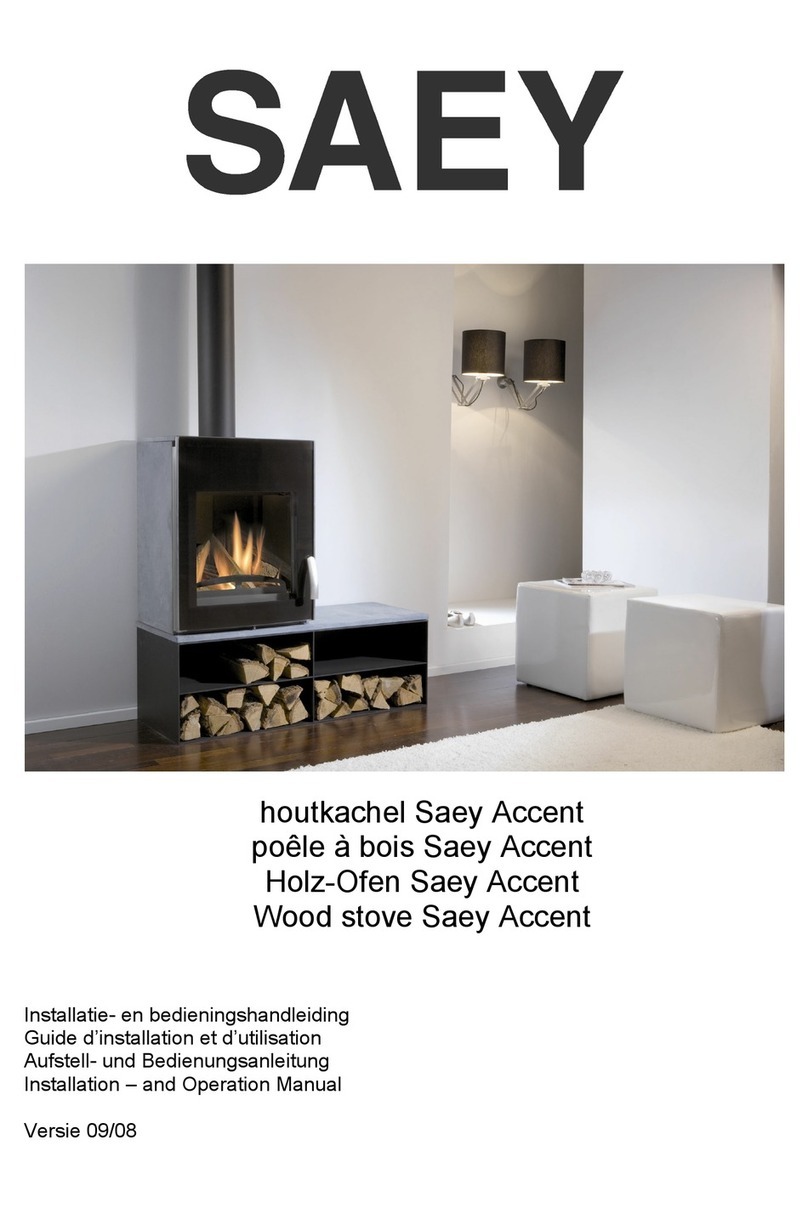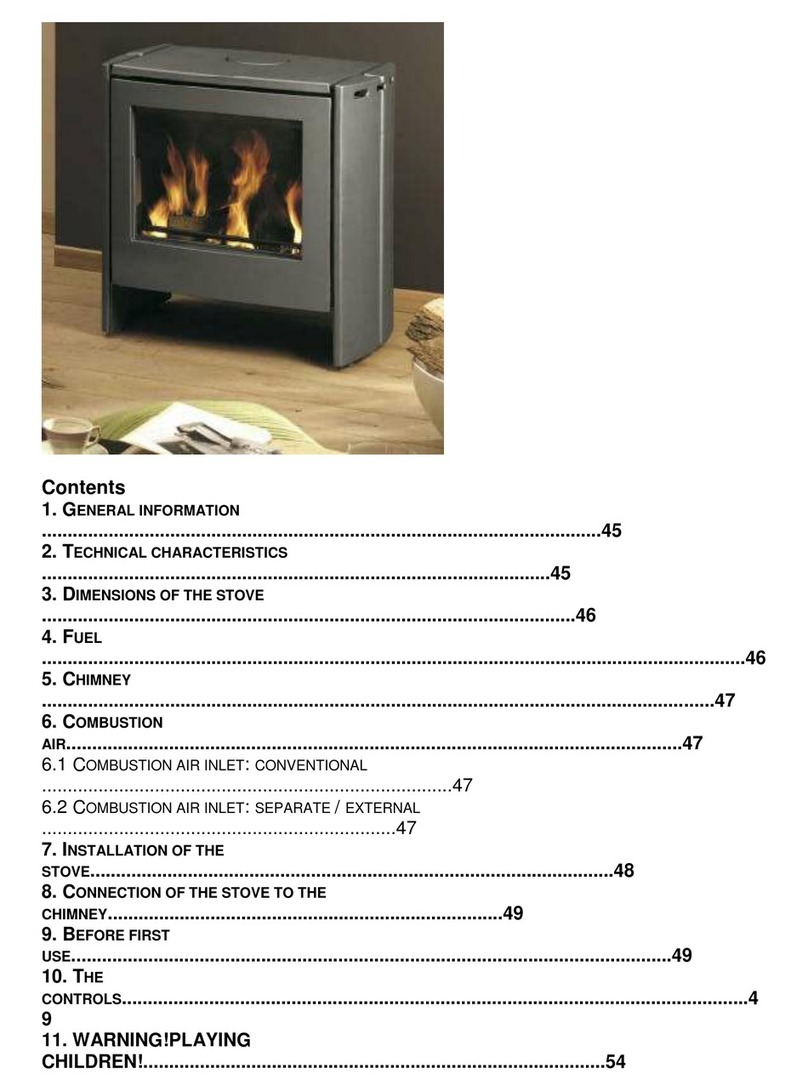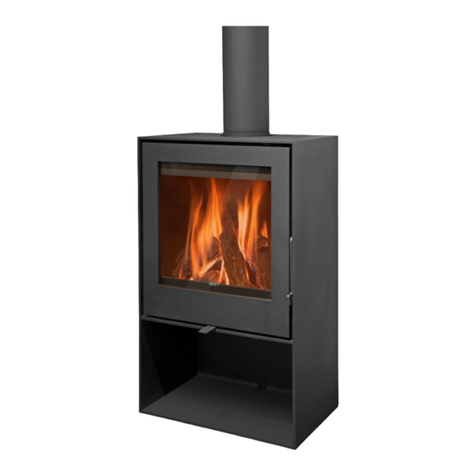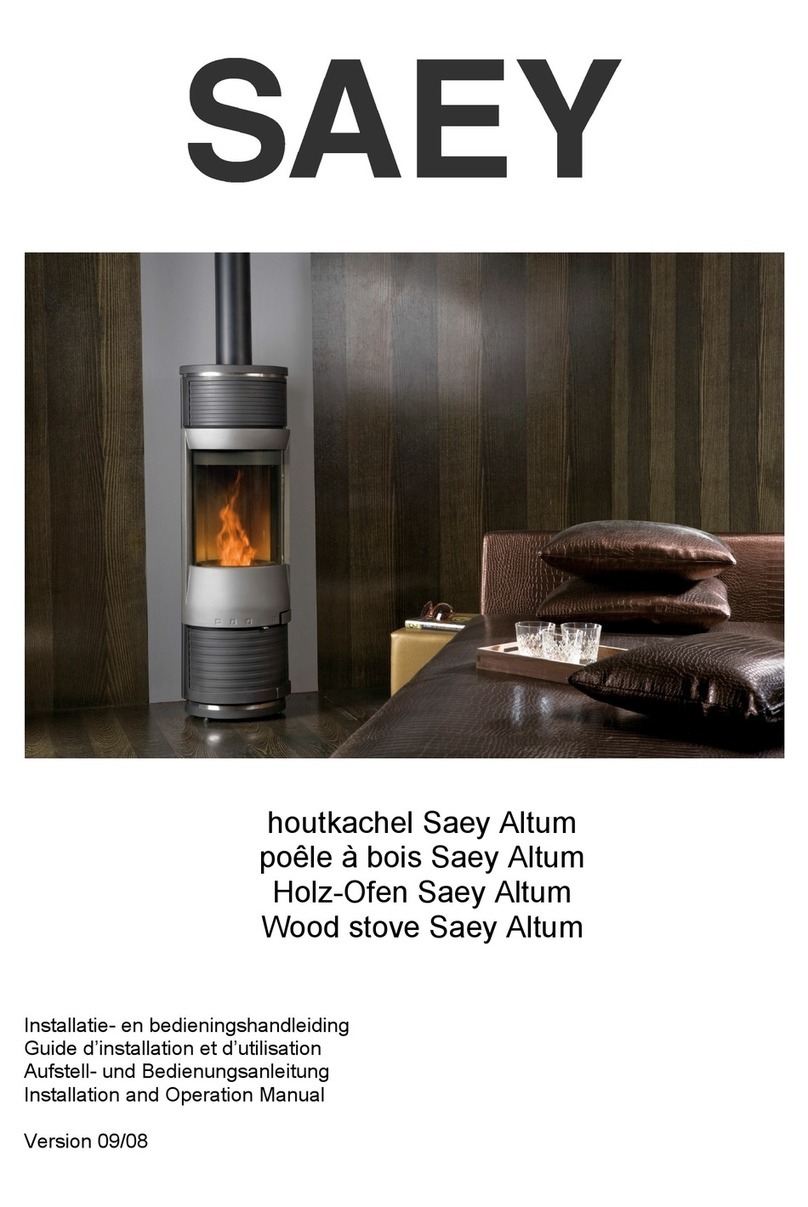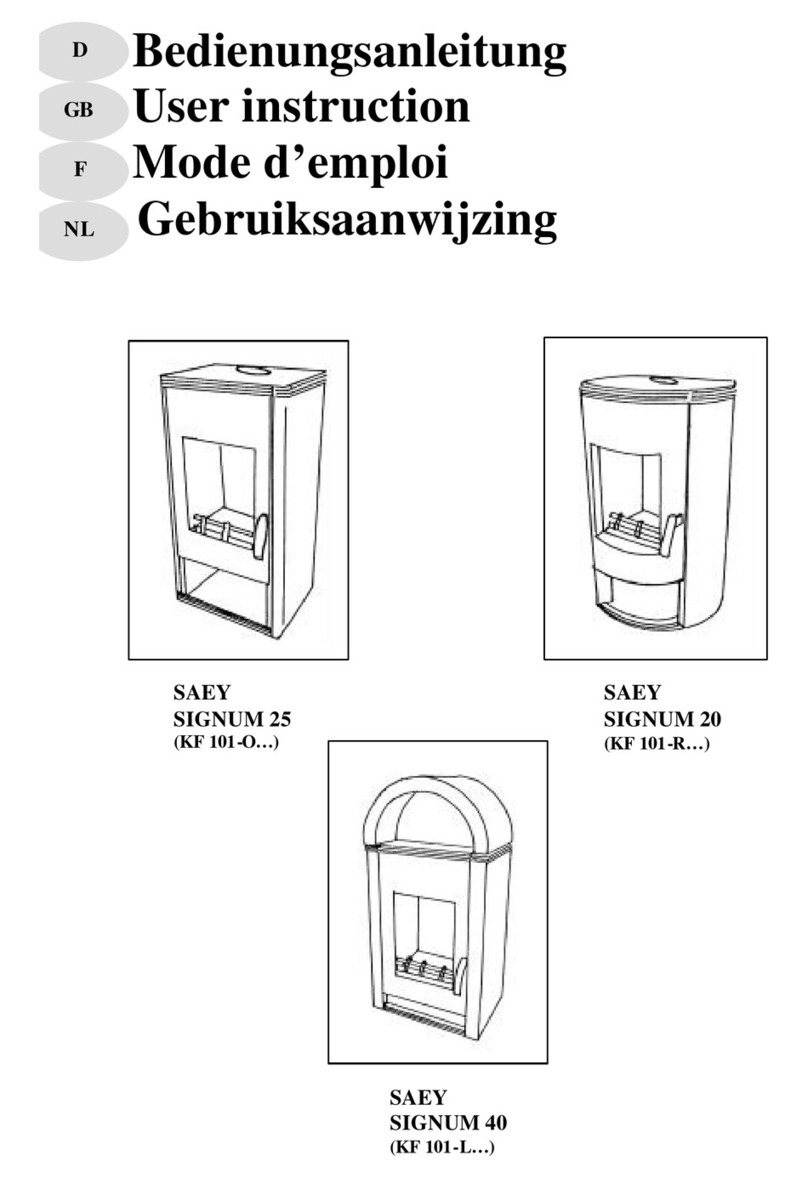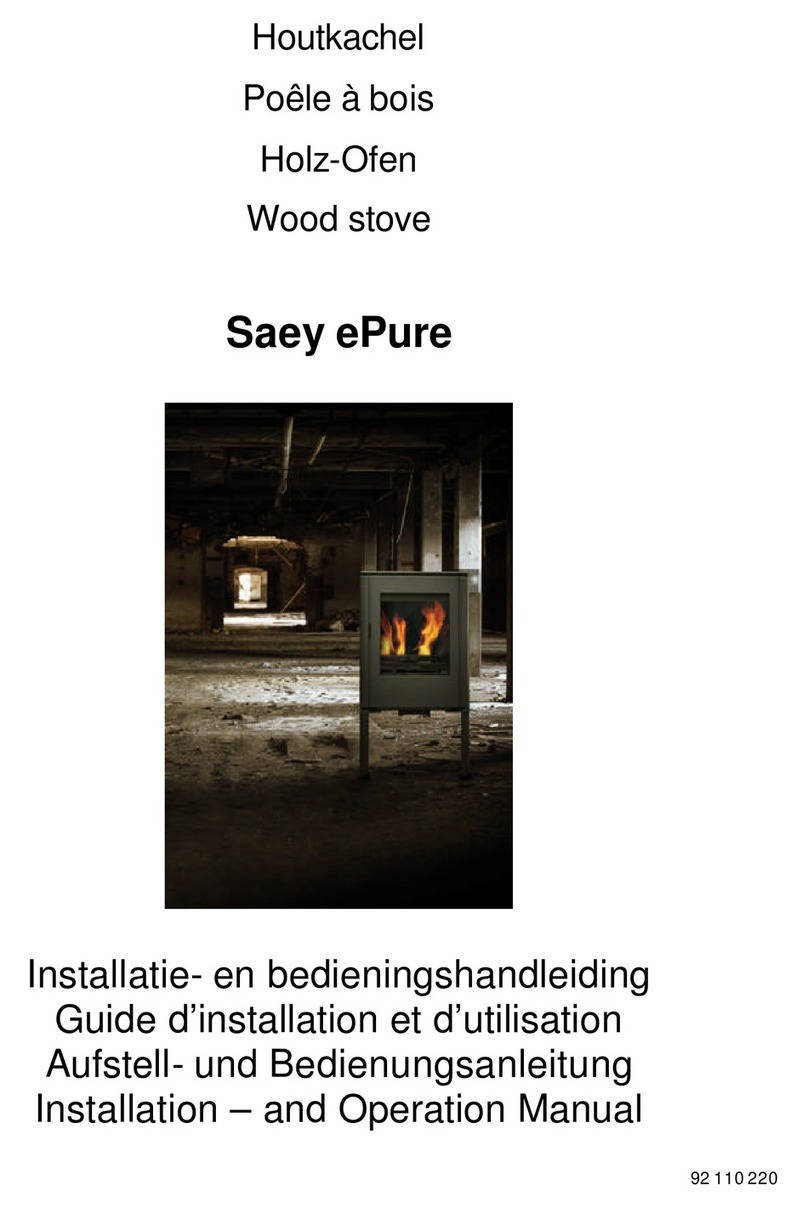9
Saey ref. Code Descripton
4790094000 0094-150 VERTICAL PIPE OUTLET ANTHR
4790194000 1094-190 WOOD GRILL S94 440 X 190 MM
4790700001 A104b/03 AIRBOX SAEY SCOPE / SAEY 194
8760003990 312-300 CLAMP, GLASS PANEL S92/94 TR
8770000020 0092-015 LEG
8770000140 0092-140 SIDE DOOR
8770000150 0092-145 SIDE DOOR INNER PLATE
8770000170 0092-165 INNER REAR CAST PANEL
8770000220 0092-272 DOOR CATCH ASSEMBLY
8770001400 0700-260 REGULATION COMB. AIR
8770001555 0700-210 PRIMARY AIR REGULATION ANTHR
8770001570 0700-300 KNOB AIR REGULATION ANTHR
8770001590 A102/03 AXLE REGULATIONAIR
8770003410 0094-012 BASE PLATE ANTHR
8770003490 0094-065 BLANKING PLATE ANTHR
8770003510 0094-090 FIRDOOR ANTHR
8770003520 0094-100 ASHPAN DOOR ANTHR
8770004120 A18b/98 ASHPANSAEY94
8770005050 0094-066 BLANKING PLATE CLAMP
8770007730 A28b/94 GLAS
8771094010 1094-060 BACK PLATE ANTR. S194
8771094020 1094-050 LEFT SIDE ANTR. S194
8771094030 1094-040 RIGHT SIDE ANTR. S194
8771094040 1094-030 FRONT ANTR. S194
8771094050 1094-130 FRONT AIR DUCT S194
8771094060 1094-310 RIGHT AIR DUCT S194
8771094070 1094-320 LEFT AIR DUCT S194
8771094080 1094-200 INNER LEFT PANEL S194
8771094090 1094-160 DEFLECTOR S194
8771094100 1094-086 FIRE GRATE S194
8771094110 1094-080 LOG RETAINER S194
8771094120 1094-330 DEFLECTOR PLATE LEFT S194
8771094130 1094-340 DEFLECTOR PLATE RIGHT S194
8771094140 1094-020 TOPPLATE ANTR. S194
8771094150 A54a/08 DEFLECTOR PLATE S194
8771094160 A56a/98 BOTTOM PROTECTION PLATE S194
8771094170 A70/08 REAR ISOLATING STONE S194
8771094180 A57a/08 HANDLE AIR REGULATION ANTR. S194
8771094190 A92/08 AIR REGULATION INDICATOR
8771094200 A53a/08 REAR PROTECTION PLATE S194
8780034740 0092-110 DOOR KNOB COMPLETE ANTHR
4790094000 0094-150 VERTICAL PIPE OUTLET ANTHR
4790194000 1094-190 WOOD GRILL S94 440 X 190 MM
4790700001 A104b/03 AIRBOX SAEY SCOPE / SAEY 194
8760003990 312-300 CLAMP, GLASS PANEL S92/94 TR
8770000020 0092-015 LEG
8770000140 0092-140 SIDE DOOR
8770000150 0092-145 SIDE DOOR INNER PLATE
8770000170 0092-165 INNER REAR CAST PANEL
8770000220 0092-272 DOOR CATCH ASSEMBLY
8770001400 0700-260 REGULATION COMB. AIR
8770001555 0700-210 PRIMARY AIR REGULATION ANTHR
8770001570 0700-300 KNOB AIR REGULATION ANTHR
8770001590 A102/03 AXLE REGULATIONAIR
English






